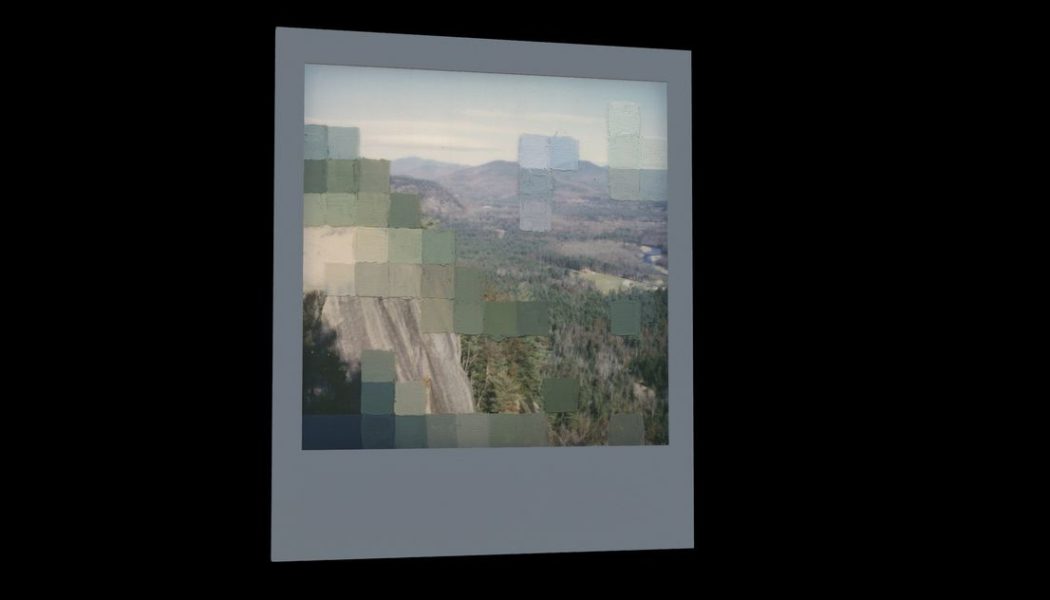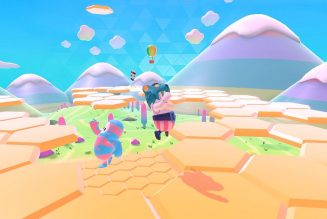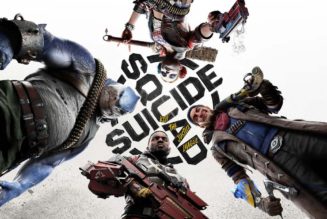On The Zium Society’s itch.io page, the word Zium is given two definitions. “A virtual gallery game, composed of eclectic and wonderful things,” reads one. “Kind of like a zine, but the museum video game version,” reads the other. In other words, at the center of the Venn diagram between galleries, museums, and games, you might find a Zium.
Curator Michael Berto released the first Zium, the Zium Museum, in 2017. “I really love art galleries,” he says, almost immediately when we start talking. A straightforward enough inspiration, but many others ended up layered on top, too. “I was definitely inspired by stuff that was happening in games, particularly things [game designer] Pippin Barr was doing. Really deconstructing what an art gallery is.” For example, Barr had recently released a virtual gallery that displayed dozens of water textures pulled from other games and asset packs from the Unity game engine.
Other games were also playing with the concept of museums as a part of their bigger whole. In one ending of 2011’s The Stanley Parable, the player can find a museum that showcases the game itself, giving it a meta twist. “That just blew me away,” says Berto. “I was like, ‘Oh, I’d love to do something like that.’”
And so he did. With the freedom of creating his own digital gallery, he was also able to draw from the inspirations he saw every day. “One of the core drives for it was just looking on Twitter and seeing [artwork] that I was very enamored with. …They’d show a gif of a 3D model, and I’d say, I want to look at that in every facet.” The Zium Museum was a way to achieve exactly that, with players able to walk around the space and see these digital artworks from any angle.
:no_upscale()/cdn.vox-cdn.com/uploads/chorus_asset/file/23376142/prR1uT.jpg)
Since the Museum, Berto and dozens of collaborators have released two more Ziums, the Garden and the Gallery. The core principle has stayed the same — in the Gallery, for example, there are huge 3D figures created by Joost Eggermont. Players can exit the gallery entirely, stepping into the wide void beyond for a better look at them. “The gallery sort of disappears, and suddenly you’re looking at almost a picture or a painting… I love that you’re just stood still, there’s your artwork, and it’s your own personal context,” says Berto.
Asking more about being allowed to wander out into the void, I referred to exiting the gallery as a “secret,” knowing there are some of those hidden in the Ziums. Berto pointed out that this doesn’t really count as one, given that there are signs explicitly telling you that you can get outside. But, he said, getting at my own feelings much more accurately, “I do really like that it feels like you’re not supposed to be doing that because you’re sort of breaking the rules.”
In other words, the Ziums feel close enough to a physical gallery that when something does play with the format, it adds an intriguing new layer. But Berto leaves everything up to the contributing artists, especially in more recent releases. “In Zium Museum, I was very much like, ‘Oh, the whole point is that it’s in the video game engine so you should be able to interact with everything,’” he says. Now, he’s happy to just put paintings up on the wall — and there are many great ones in the Gallery. But most artists do choose to do something with the format, leading to a huge variety of art styles.
Two of my favorite exhibits in the Zium Gallery play with the digital-physical divide in very different ways. Cat Graffam’s object permanence is a series of polaroids, painted over with acrylics. They exist, physically, separate from the Zium, and usually, their physicality is part of the statement. Graffam lives with ADHD and cluster headaches, both of which impact their memory. “I collect stuff as an overcompensation for my lack of ability to remember moments of significance, keeping them as trigger objects so that I can keep at least a slice of my past retained,” reads part of their description of the series.
“So, it is kind of funny that it is existing in a virtual space,” they say to me. “While that might seem contradictory to the physical nature of polaroids and paintings, I think they can still exist effectively in a digital realm.” They worked together with Berto to incorporate both an effective reflection of how the pieces might appear in a physical gallery and additional aspects for the digital version, like how the centerpiece stretches outwards into the room, creating an optical illusion that wouldn’t hold the same power in real life. The combination feels to me like one of the Zium Gallery’s best representations of its potential.
:no_upscale()/cdn.vox-cdn.com/uploads/chorus_asset/file/23376144/VuukQe.png)
The other is Julián Palacios’s I hope to see you again. Walking down a corridor of the Gallery, I entered a room that was essentially a whole other game. Described by Palacios as an “immersive video clip,” I hope to see you again is a trance-like exploration of a song, a train station, and a goodbye. It’s one of the aspects of the Gallery that couldn’t be recreated physically at all. But it’s also somehow elevated by the impression of stepping from a close-to-ordinary building into a surreal dreamscape.
Palacios, who has published other games that simulate the haze of memory and dreams like Promesa, sees the Zium as a great opportunity for artists to “try out new ideas.” He points to another essentially complete game within the Zium as his favorite example, Arcadia Under Construction, which is a prequel to a separately released game, Even in Arcadia.
Digital exhibitions have been gaining popularity in the last few years, and not just because museums were looking for ways to deal with the pandemic. Other game developers have been making them, art collectors have been making them, and even Fortnite has been trying out the format. But there’s still a lot of room for experimentation.
One of Berto’s favorite contributions to the Gallery is the work of LaumeB, where a room of mostly ordinary paintings also opens up, from the right angle, into a second space that projects the artwork into a room of its own. Between exploring myself and speaking with the different artists involved, I get the sense that the Ziums have only scratched the surface of the ways in which they could blend the physicality of their inspirations with their digital reality. Berto is working on a VR version of the Gallery — for starters, adding another layer to what the Ziums already achieve in blending the two. “It’s not quite like being in a real gallery and not quite a computer game gallery — it’s like this weird other thing,” he says.
And that blending adds another layer to what Berto loves about galleries in the first place. “A gallery is like a supermarket of ideas,” he says. “One moment, you’re immersed in a vision of the French Revolution, and the next, you’re in front of a box of laundry soap with a teddy bear inside. Dali’s The Metamorphosis of Narcissus one floor down from Andy Warhol’s Cow Wallpaper.” Or, in the Zium Gallery, a hazy, interpretive walking simulator one floor down from a painting that expands into a room of its own, where giant sculptures watch through the windows.
“In a gallery, so often you find a kind of variety that really excites the imagination — and consciousness — in a pure way,” Berto says. In the Ziums, that variety takes on a whole new format.









